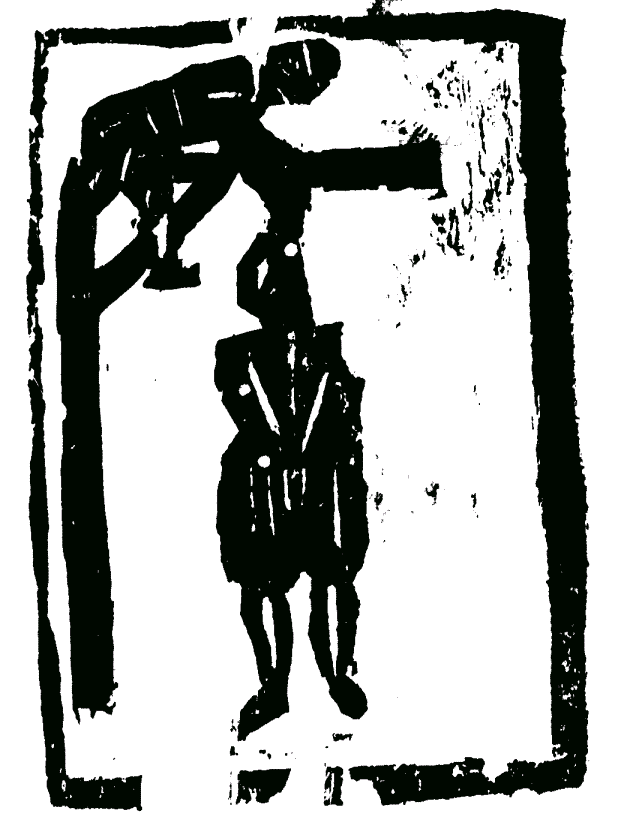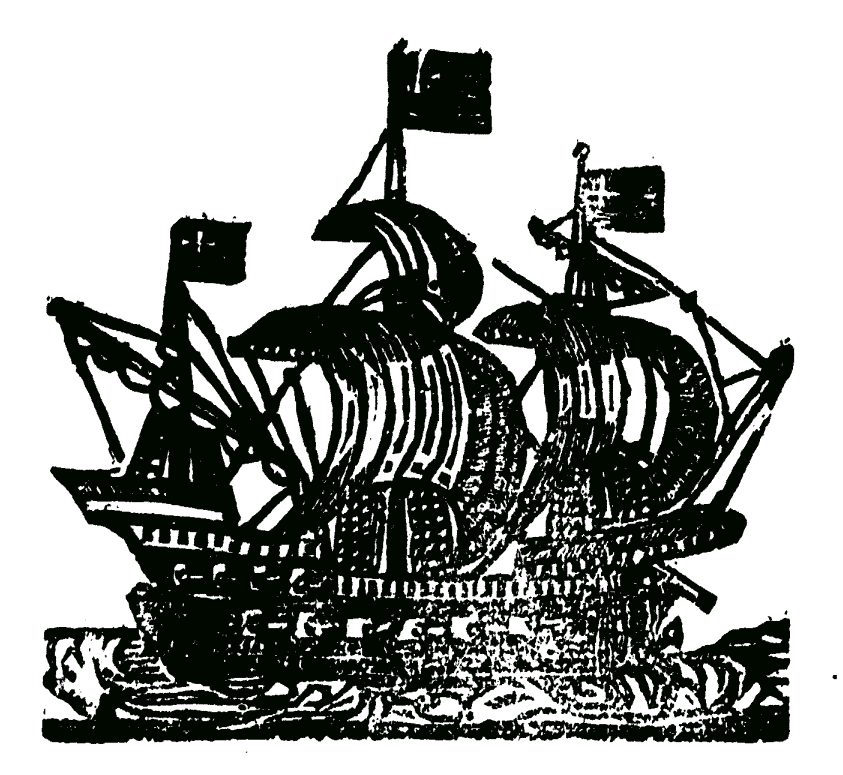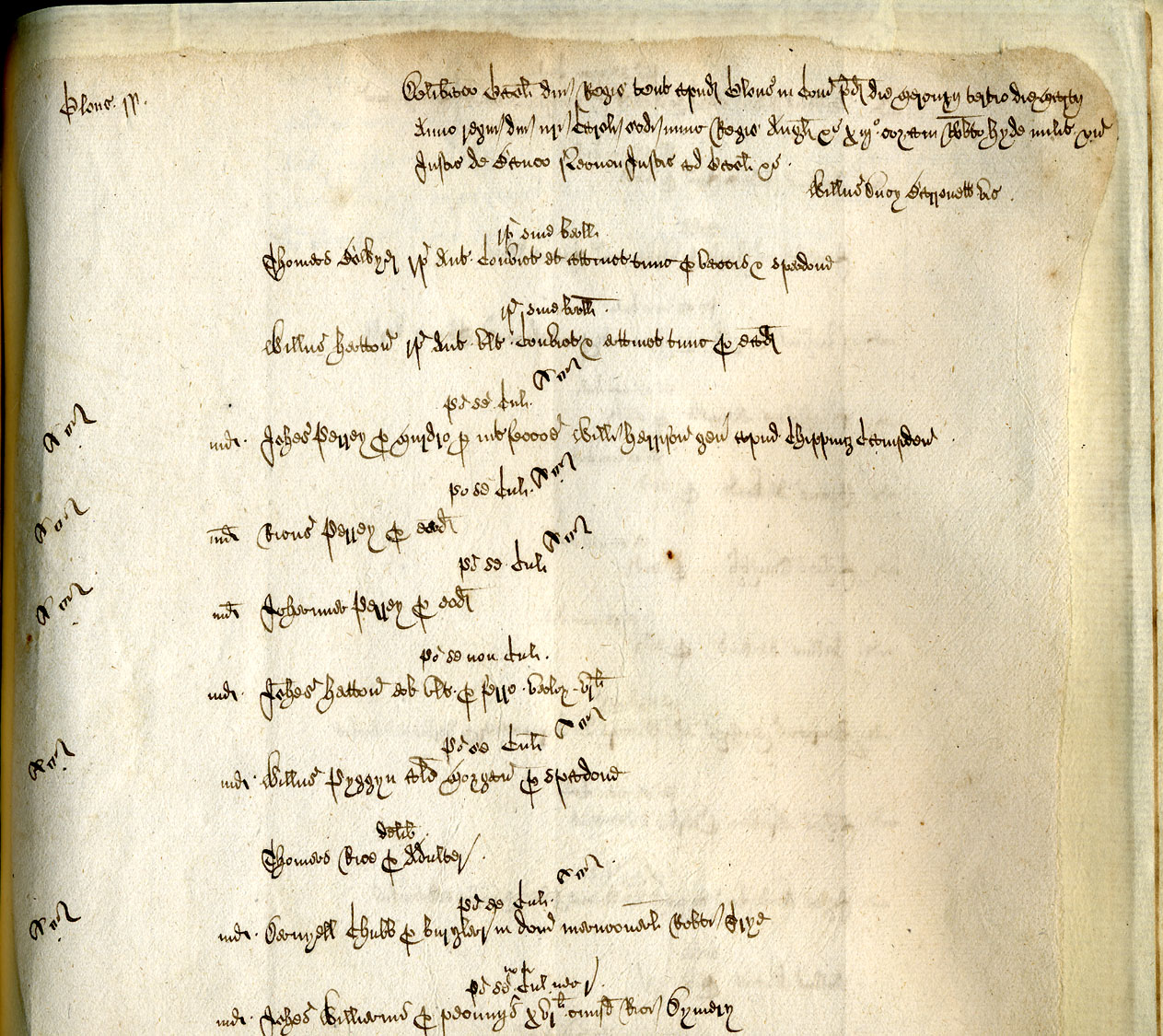


|
The Campden Wonder |

|
||
| "Time, the great Discoverer of Truth, shall bring to Light this dark and mysterious Business" | ||||
|
|
|
|
|
|
The document reproduced below can be found amongst the records of the Court of Assizes for the Oxford Circuit. It is held at the Public Record Office in Kew, London and catalogued under reference ASSI 2/1.
From the 13th century until 1971, major crimes such as murder, robbery, burglary, rape and witchcraft were tried in the Assize courts. The Assizes were held twice each year in each county. The counties were organised into Circuits, Gloucestershire being part of the Oxford Circuit. The judges who sat at the Assizes were commissioned from the London high courts. One of their main functions was to perform a "gaol delivery", that is to try all persons incarcerated in the gaols by the local magistrates on suspicion of having committed a felony.
The facsimile shows an extract from the record of Gaol Delivery at Gloucester. This is, as far as we know, the only surviving record of the trial of John, Richard and Joan Perry. It is dated Wednesday 3rd March 13 Charles II (1660/1). This date is itself a puzzle.
The document presents a number of difficulties for the modern reader.
However, with effort, it can be read. It clearly lists John ("Johes"), Richard ("Ricus") and Joan ("Johanna") Perry.
Alongside John Perry's name are the words pro murdro per interfeccionem Willi Harrison gen apud Chipping Campden (for the murder of William Harrison gent at Chipping Campden). Against Richard and Joan's name's is written pro eod (for the same).
Above and to the left of each of their names are written a number of Latin abbreviations. These are notes made by the scribe concerning the proceedings of the trial and its outcome.
The first is po se, short for ponit se super patriam, meaning literally "puts himself on the country". This is the plea: not guilty.
Just to the right of this can be seen the three letters cul, short for culpabilis. This is the verdict of jury: guilty.
Finally, in the left margin beside each name, and above and to the right of each name we can see three further equally ominous letters, Sus, short for Suspendatur: to be hanged.
It should be noted that my interpretation of these abbreviations differs from those give by Clark (P78), who interprets "po se cul" as "pleaded guilty". However, Clark's reading is at odds with the story as told by Overbury, who says that the Perrys pleaded not guilty at their second trial. My understanding of these abbreviations is confirmed by the Public Record Office web site.

I am neither a Latin scholar nor a professional historian. The transcript and translation given below are my best attempt to read and interpret this challenging document. I would welcome contributions from those better qualified than myself who believe they can fill in the gaps that I have left or correct any mistakes that I have made.
Glouc.
Delibac. gaoli dnis Regis tent apud Glouc in com pred die mercury tertio die marty
anno regnis dnis nris Carolis scdi nunc Regis Angli etc xiii coram Robti Hyde milit ??d
Justic de Banc. Necnon Justic ad Gaoli ?
Willus Ducy Barronett v?
? sine valli
Thomas Bowyer ? aut convict et attinct tunc pro vaccis et spadone.
? sine valli
Willus Hatton ? aut vel convict & attinct tunc pro ead
po se cul sus
sus iud Johes Perrey pro murdro per interfeccionem Willi Harrisone gen apud Chipping Campden
po se cul sus
sus iud Ricus Perrey pro ead
po se cul sus
sus iud Johanna Perrey pro ead
Gloucester
King's Gaol Delivery held at Gloucester in the county of the same name Wednesday the third of March in the 13th year of the reign of our Lord Charles the second now King of England etc. before Sir Robert Hyde Justice of the Bench and Justice of the Gaol
William Ducy Baronet
?
Thomas Bowyer ? convicted and arraigned? for a cow and a bullock?
?
William Hatton ? ? convicted & arraigned? for the same
Pleaded not guilty Found guilty To be Hanged
To be hanged John Perry for the murder by killing of William Harrison gent at Chipping Campden
Pleaded not guilty Found guilty To be Hanged
To be hanged Richard Perry for the same
Pleaded not guilty Found guilty To be Hanged
To be hanged Joan Perry for the same
The preamble to the document reproduced above clearly states the date as "die mercury tertio marty" or "Wednesday 3rd March". The regnal year given is less clear to me, but is probably 13 Charles II, and this is certainly what is given in the partial transcript of this document in Sir George Clark's book.
Although Charles II did not accede to the throne until the Restoration of the Monarchy 1660, the start of his reign is counted from the execution of his father Charles I on 30th January 1648/9. So the thirteenth year of Charles II's reign would have started on 30th January 1660/1, which is consistent with Overbury's account. Overbury states that the first trial took place in the September following Harrison's disappearance (September 1660) and the second trial the following spring (presumably March 1660/1).
However, there is one problem: 3rd March 1660 was not a Wednesday, it was a Sunday!
Here is a link to a reliable day-of-the-week calculator: http://www.albion.edu/english/calendar/weekday.htm
Calculating the day of the week is complicated by the fact that the calendar in use at this time was the old Julian calendar, finally abandoned in England in 1752. At this time, the Julian calendar was 10 days behind the Gregorian calendar in use today. Also, it must be remembered that according to the Julian calendar, the new year did not begin until 25th March. In other words 31st December 1660 was followed by 1st January 1660, not 1661. Assuming that the scribe of this document is using the Julian calendar, the date of this document is 3rd March 1660 (Old Style) or 13th March 1661 (New Style). That day was a Sunday.
A probable explanation for this anomaly emerges when one examines the other assizes for the Oxford circuit held that spring.
| County Assizes | Held at | Day of the Week | Date |
| Berkshire | Reading | Thursday | 28th February 1660/1 |
| Oxfordshire | Oxford | Monday | 4th March 1660/1 |
| Worcestershire | Worcester | Friday | 8th March 1660/1 |
| Staffordshire | Stafford | Thursday | 14th March 1660/1 |
| Shropshire | Shrewsbury | Tuesday | 19th March 1660/1 |
| Herefordshire | Hereford | Monday | 25th March 1660/1 |
It seems clear from this that Sir Robert Hyde had probably started his journey in London towards the end of February and had travelled westwards, holding the first assizes in Reading on the 28th, then moving on to Oxford at the start of March and then north west to Worcester, Stafford and Shrewsbury before ending in Hereford.
Where on this journey would he have visited Gloucester? There seem to be two possibilities.
The first option would have been for him to travel west to Gloucester from Oxford before moving on to Worcester. This would mean that the Perrys’ second trial would have to have taken place on Wednesday 6th March 1660/1, and one would have to assume that the scribe simply wrote Wednesday 3rd March rather than Wednesday 6th March by mistake. But this would mean that Hyde would have had to have travelled about 100 miles over 17th century country roads and held three assizes in the space of a week, which seems unlikely.
The second option, which seems by far the more likely, is that Sir Robert visited Gloucester at or towards the end of his journey and that he arrived there from Hereford early in April. Judging by the fact that records of all the assizes appear to be in the same handwriting, the poor scribe had followed Sir Robert on his journey and by the time he reached Gloucester he appears to have simply forgotten what month they were in and wrote “Wednesday 3rd March” rather than “Wednesday 3rd April”!
Monmouth was also part of the Oxford circuit and, although no record for the Monmouth assizes held in the spring of 1660/1 has survived, it is possible that Gloucester was the penultimate leg of the journey and that Sir Robert would have moved on from Gloucester to Monmouth before returning to London, some time around the second week of April 1661.
Looking at the schedule Sir Robert had been following for the previous month, one cannot help wondering whether the fact that the Gloucester assizes was the last or last but one to be held that spring might account in some measure for the Perrys’ treatment at their trial.
The journey from one city to the next cannot have been quick and easy in those days of transport on horseback or by horse-drawn carriage over poorly maintained dirt roads, which were probably mostly mud at this time of the year. Once Sir Robert had arrived at each of the cities he visited, there was clearly plenty of business to be dealt with, as the record of each assize stretches on average to two or three pages of cases tried and sentences passed. No doubt Sir Robert was exhausted after this hectic month of travelling around the circuit meting out justice. Was he anxious to get back to London as soon as possible? Was he over-eager to get through the business for the day and reluctant to become embroiled in a complex case at this stage in his perambulations? We will never know for sure but it is certainly tempting to speculate that this might have been a factor which contributed to the Perrys’ fate.
To sum up, it seems highly likely that the Perrys were sentenced to death by a weary and impatient Sir Robert Hyde on Wednesday 3rd April 1661.